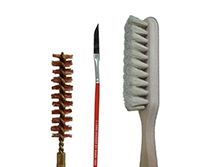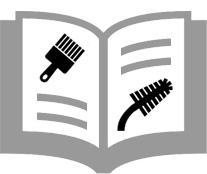Conductive Brushes
Shop Gordon Brush's Conductive Brushes below! Our inventory includes 8 different types with a variety of fill and handle material to choose from. Browse our bulk package options directly from the manufacturer with wide variety of different conductive brush sizes, shapes, handle length, handle width, brush face length and do much more below:
Not sure which conductive brush you need for your business?
Our customer service representatives can answer your questions. Call us at: 1-800-950-7950 or 1-323-724-7777
Conductive Brushes have a surface resistivity of 102 - 104 and are perfect to use when you need to remove static buildup from the work surface. Conductive brushes will act as a conduit between the charged surface and the path to ground. Made with fully conductive materials that are active static eliminators, your choice becomes the style and size that best works for you. Please use these brushes with a wrist strap or other mechanism to provide a path to ground.
Conductive brush materials range from metal wires such as brass, phosphor bronze, stainless steel and carbon steel to fibers such as Conductive Nylon (carbon coated), carbon fiber and a special fiber called Thunderon®.
Thunderon® is a conductive fiber material that offers far greater control of static electricity, and superiority in overall performance than carbon coated conductive fibers. Thunderon® is a very thin / soft fiber made with an extremely conductive coating. It has good abrasion resistance, does not break easily, and has a strong anti-bacterial performance due to the nature of the surface coating. Conductive brushes are often used to dissipate charges on electronically charged surfaces and Thunderon® is very effective at this. The surface resistivity of Thunderon® is 102 - 103 Ω /cm. Goat hair is commonly mixed with Thunderon® to help reduce costs and to slightly stiffen the brush, since Thunderon® is so soft when used by itself.
Technically, Thunderon® fiber is an acrylic fiber that has been chemically bonded with a layer of copper sulfide. This outer layer becomes a part of the host fiber itself, which precludes the 'flaking' problem experienced by other conductive fibers. The fiber diameter is as fine as 0.004 cm (0.0015") and its conductive layer is a super thin 300-1,000 (angstroms). It has electrical specific resistance of 102 - 103 Ω /cm.
Conductive brushes are used for applications where it is necessary to reduce the static charge to 0v because even a small charge obstructs the operation and the medium being discharged is not sensitive to high current flow. An example is the brushes inside copy machines. The charge on the paper is small but its presence is sufficient to make individual sheets of paper cling together.
The current created by the rapid discharge [I = E/R and R is near 0] of the paper through the conductive fiber is not harmful to the equipment. Another example is in brushing off plastic chips that cling to the block from which they were produced. The rapid discharge is not harmful to the medium and a small charge is problematic. Conductive brushes enable a thorough cleaning of ESD sensitive assemblies, while conventional brushes generate high charges that endanger products and employees.
If you can't find the perfect stock brush from the 67 American made options in the Conductive Brushes category, Gordon Brush® can customize a brush for you. Contact our customer service department so that they can put you in touch with our team of design engineers: 323-724-7777 or [email protected].
If a brush exist, we have it…if it doesn't, we'll make it!

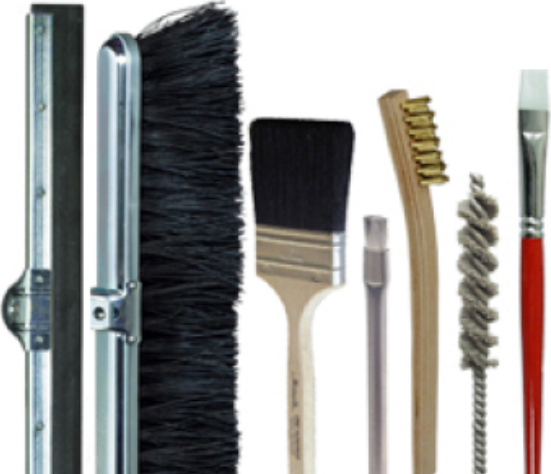
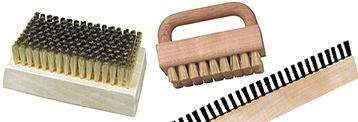 Block Brushes
Block Brushes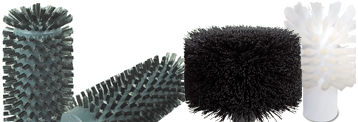 Bore Brushes
Bore Brushes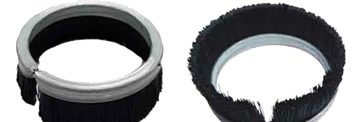 Cup Brushes
Cup Brushes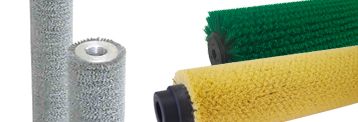 Cylinder Brushes
Cylinder Brushes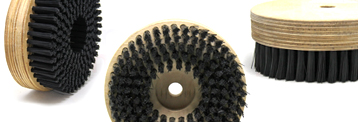 Disk Brushes
Disk Brushes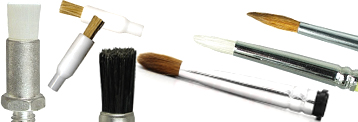 Flow Thru Brushes
Flow Thru Brushes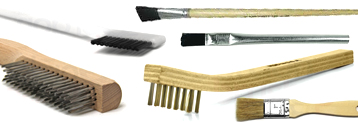 Hand Held Brushes
Hand Held Brushes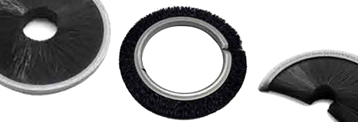 Inward & Outward Disk Brushes
Inward & Outward Disk Brushes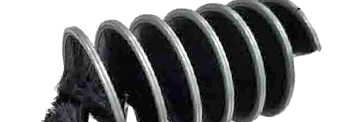 Inward Wound Coil Brushes
Inward Wound Coil Brushes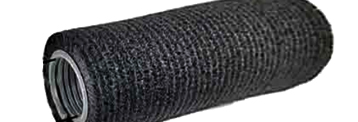 Outward Wound Coil Brushes
Outward Wound Coil Brushes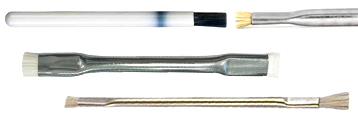 Pencil & Applicator Brushes
Pencil & Applicator Brushes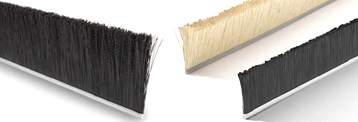 Straight Strip Brushes
Straight Strip Brushes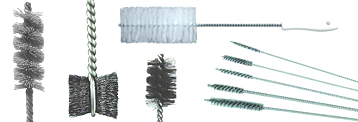 Twisted-In-Wire Brushes
Twisted-In-Wire Brushes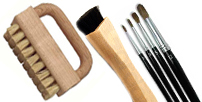 Natural Fill Brushes
Natural Fill Brushes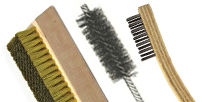 Wire Fill Brushes
Wire Fill Brushes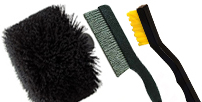 Synthetic Fill Brushes
Synthetic Fill Brushes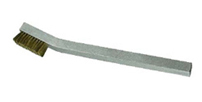 Metal Handle Brushes
Metal Handle Brushes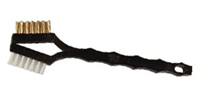 Plastic Handle Brushes
Plastic Handle Brushes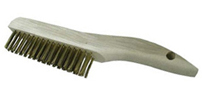 Wood Handle Brushes
Wood Handle Brushes